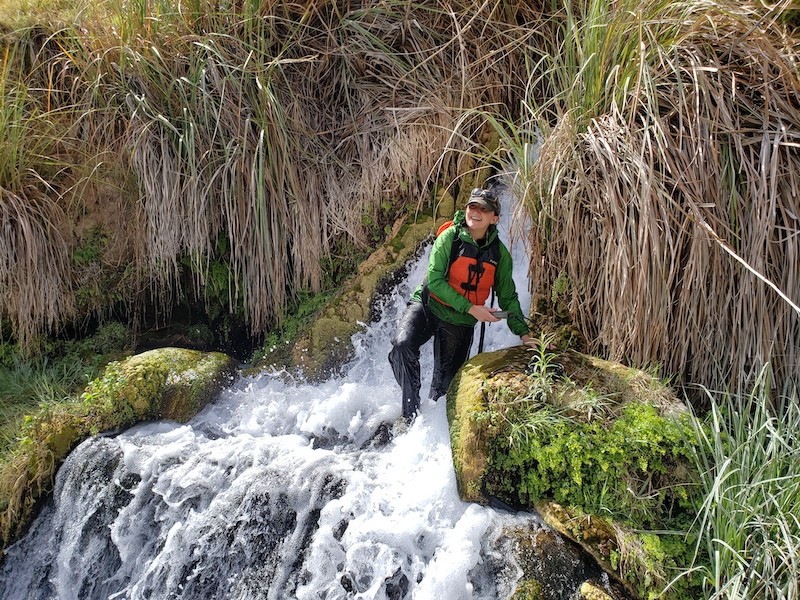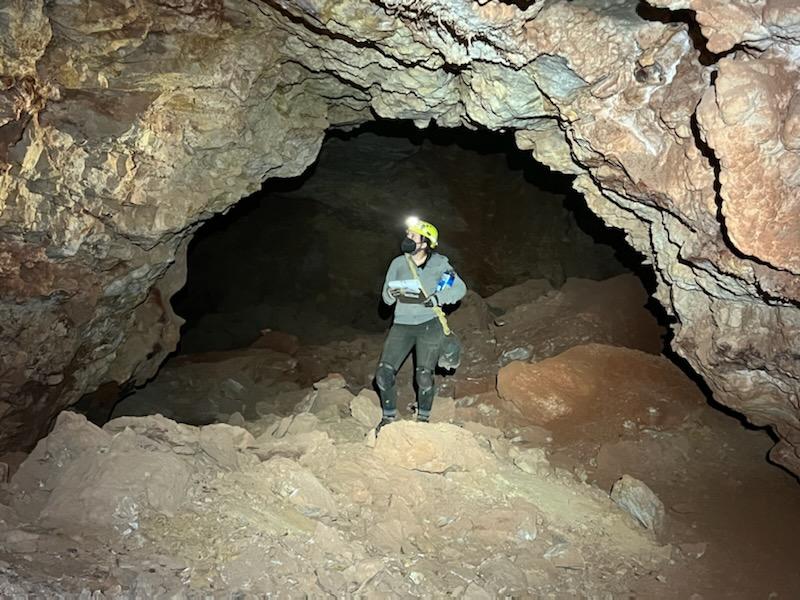The Springs and Seeps of the Grand Canyon
Written by: Danielle Urich
Working for Grand Canyon National Park has been an adventure of a lifetime; the combination of fun, cutting-edge science with one of the most incredible landscapes on the planet is hard to beat. The bulk of my work is focused on the hydrology of the Grand Canyon. When most people imagine water in the Grand Canyon, they think of the Colorado River, which is a very important source of water for the region. However, our concentration is on the springs and seeps that dot the canyon slopes, creating pockets of lush vegetation.
Some of these springs come out of large caves and are, by far, my favorite sites to work in. Recently, I’ve gotten to join two eight-day-long trips to participate in the laser scanning of two of these hydrologically important caves using LiDAR (“Light Detection and Ranging”) technology. Using a handheld LiDAR device worth six times my car, we systematically scanned these caves to make extremely detailed 3D maps while navigating muddy rocks, 70ft talus slopes, deep pools of water, and claustrophobia-inducing crawls…all by the light of only our headlamps.

As much fun as this is, it also serves an important purpose for the science we’re doing here– characterizing the aquifer system on the north side of the canyon. This system of water, which travels underground through large conduits like these caves, smaller fractures, and even the tiny pores in the matrix of the rock, is the main source of drinking water for the park. Some backpackers can get spring water from other sources or filter from streams, but for the vast majority of the 6 million people that visit the canyon each year, the North Kaibab Aquifer is it. This system is vulnerable to various sources of pollution, including fecal matter from bison or possible spills from car accidents, which enter the system through sinkholes on the top of the plateau. Additionally, climate change and the drought here in the southwest are altering the flow regimes for these springs, causing some to stop flowing completely and causing others that have been bone-dry for years to start gushing again. Our lack of understanding of this system increases our uncertainty when trying to predict how future events could affect our ever-more-precious water supply.

And that is why I get paid to stumble around in the dark; we have a unique opportunity to measure this system from the inside, and the data collected will help us get closer to answering the myriad questions we have about the Grand Canyon.
Working with the National Park Service for the last year has solidified that this is the direction I want my career to take. Even the time I spend in the office managing data and working with our geodatabase is rewarding. The people I’m lucky enough to work with are extremely passionate and intelligent and motivate me to become both a better scientist and a better person.
Interested in learning more about American Conservation Experience, including our programs – Conservation Crew and Emerging Professionals in Conservation? If so, click here to check out our resources and media and to apply online.